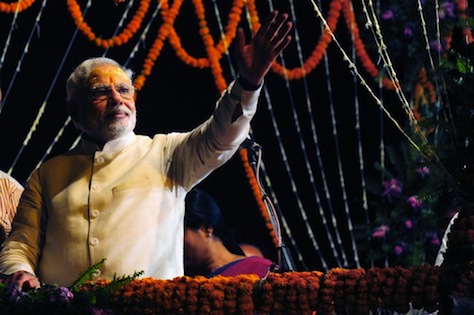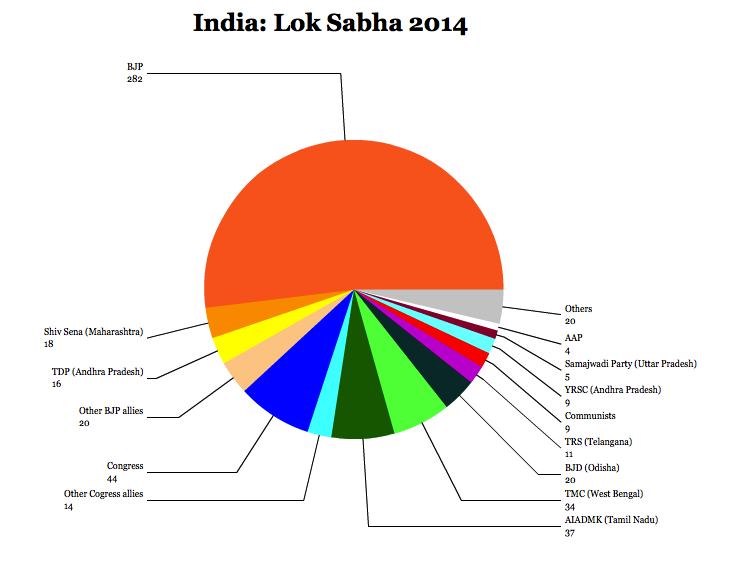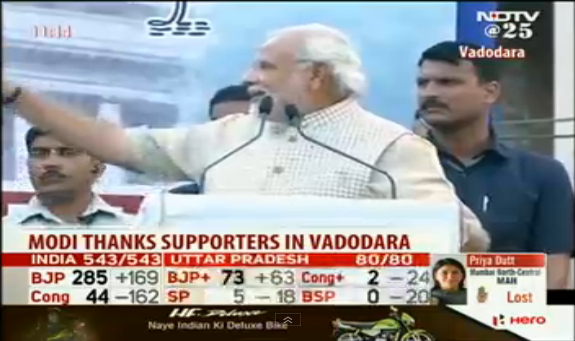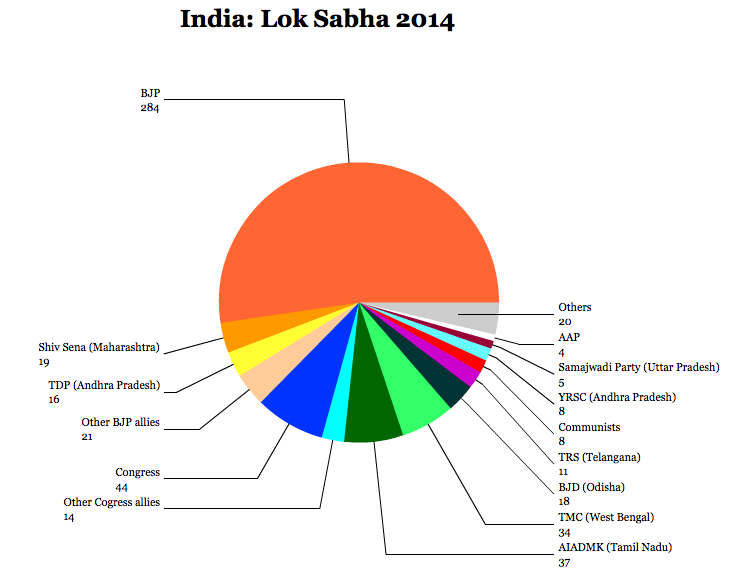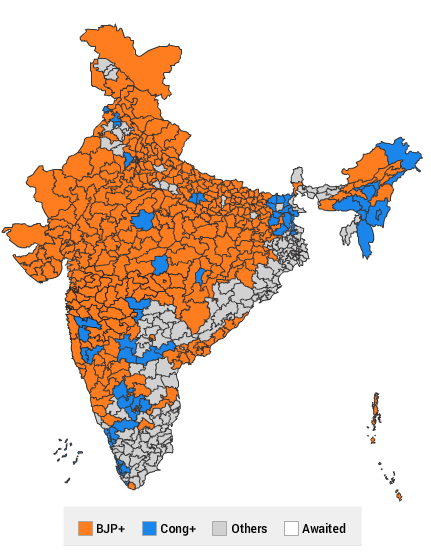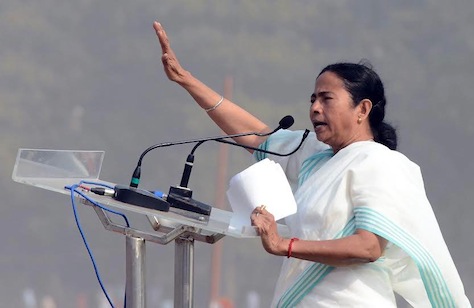
India’s prime minister Narendra Modi can breathe a sigh of relief about this spring’s state elections: in none of the three biggest prizes (Kerala, Tamil Nadu and West Bengal) is his Hindu nationalist Bharatiya Janata Party (the BJP, भारतीय जनता पार्टी) a local presence.![]()
That means, if nothing else, Modi and his allies will not be blamed for yet another state-level electoral setback of the kinds that his party suffered in Delhi and in Bihar last year (though elections in Assam are expected to be fiercely contested by the BJP).
Since mid-April, elections have been underway in five states, the results of which will be announced Thursday, though exit polls are already giving Indians an idea of who might triumph.
In West Bengal, the biggest state-level prize of India’s spring elections, a popular chief minister, Mamata Banerjee, is attempting to hold onto power just five years after ending 34 consecutive years of communist rule. Voting took place in six phases between April 4 and May 5.
Between 1977 and 2011, the Communist Party of India (Marxist) (CPI(M)), a left-wing splinter group from what was then India’s main communist party, governed the state as part of the Left Front (বাম ফ্রন্ট) coalition. By most accounts, communist rule in West Bengal wasn’t incredibly successful in boosting growth, despite a sweeping land reform and other efforts to boost nutrition and anti-poverty measures.
In the 2011 election, Banerjee (pictured above), known simply as ‘didi‘ (‘sister’ in Bengali), won power in a lopsided victory. Banerjee, who began her career in the Congress Party, formed the All India Trinamool Congress (AITMC, সর্বভারতীয় তৃণমূল কংগ্রেস) in 1997. Going into the elections, she and her allies controlled 227 of the 294 sets in the legislative assembly as a result of the last election’s rout.
In the current election, the Left Front formed a rare electoral alliance with the Indian National Congress (Congress, भारतीय राष्ट्रीय कांग्रेस), struggling for relevance after its national defeat in the 2014 elections and the erosion of its power at the state level both to Modi’s BJP and to regional parties like Banerjee’s AITMC. Despite the fact that Congress and the West Bengal communists appeal to very different constituencies, the alliance has worked out better than perhaps expected.
Ironically, exit polls also show that Congress is set to lose power to communists when the results are announced for the May 16 elections in Kerala, the far southwestern state where Congress and the communists, with wildly different views on economic and social policy (in Kerala as well as in West Bengal), have vied for power for decades. Continue reading Banerjee eyes reelection in West Bengal state election results
